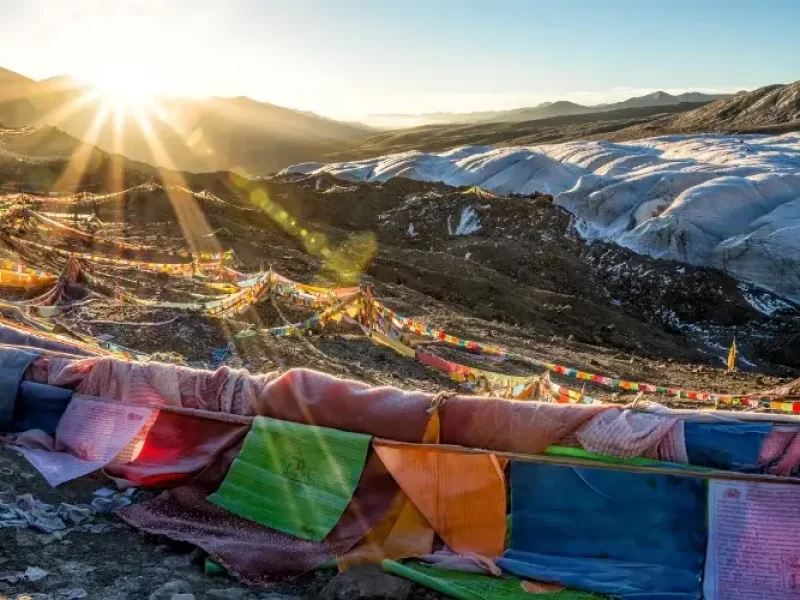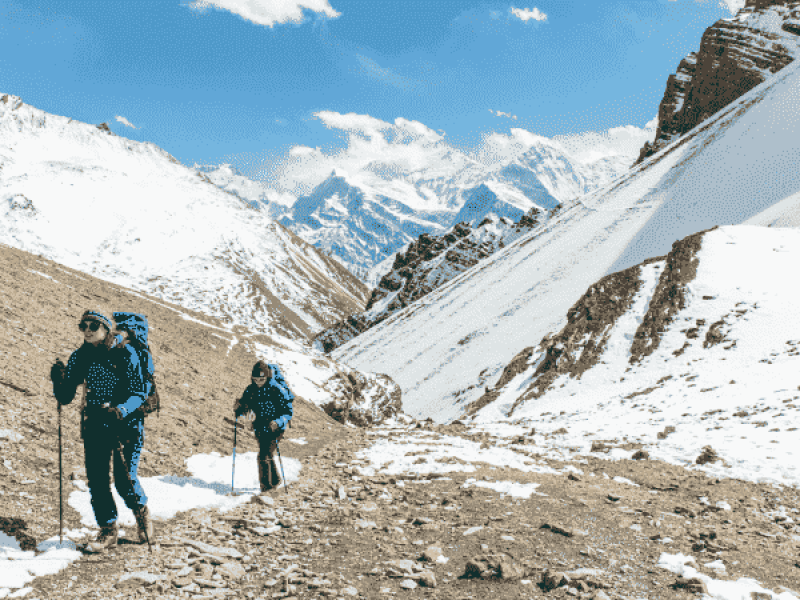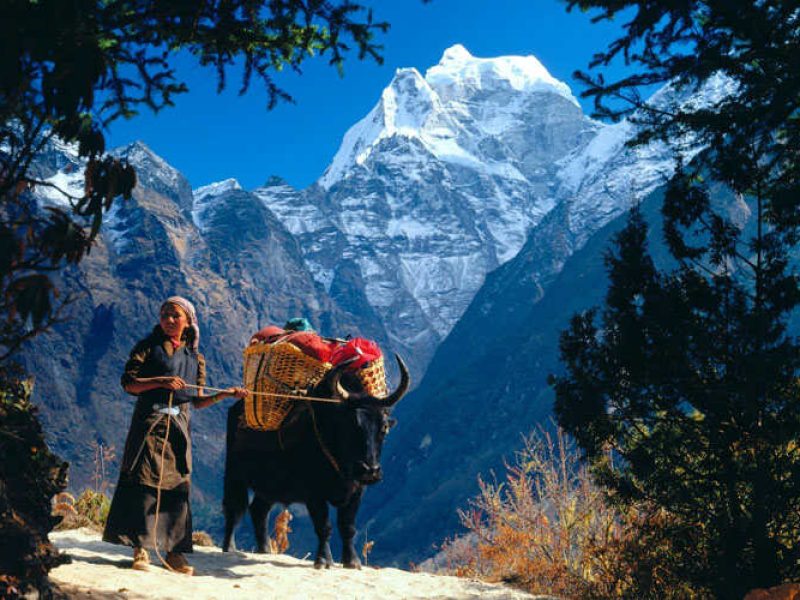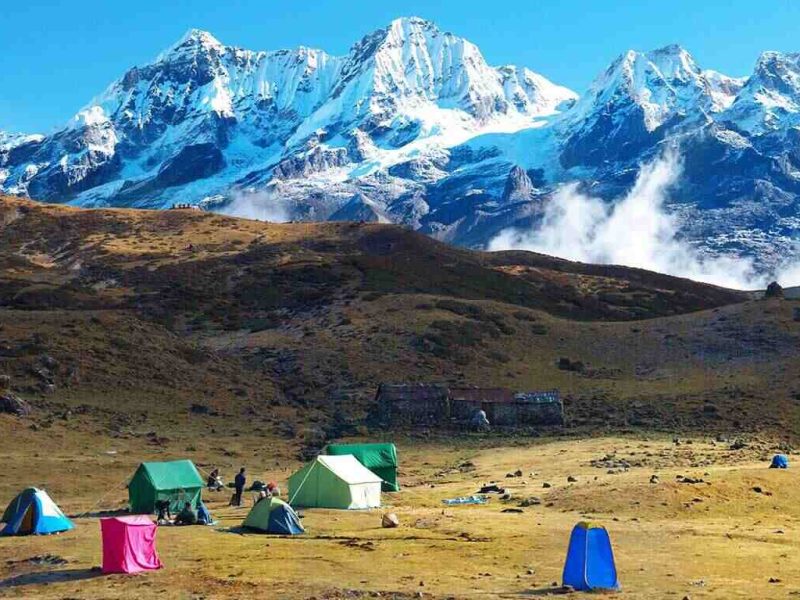Nepal offers breathtaking trekking experiences. However, foreign tourists must be prepared for a safe and enjoyable trek. Familiarize yourself with Nepal’s diverse terrain and cultural richness before starting on your adventure. Understand the importance of preparation for your trekking experience.
Trekking in Nepal’s Himalayas is a thrilling adventure but preparation is very important. This guide provides 10 tips for trekking, ensuring responsible and respectful travel to the environment and local cultures. These tips can be used alone, in groups or with guides and porters. Explore essential tips for safe trekking in Nepal’s Himalayas which helps to enhance your trekking experience in Nepal.
1. Understand Your Own Limitations & Expertise
Planning a Nepali trek requires considering your experience and fitness level. Choose paths that suit your abilities and fitness level and consider whether to take a guide or porter. Book a trek with a company in advance for ample preparation time.
Choose a trek that suits your experience and fitness level such as the Tamang Heritage Trail or Poon Hill. Shorten longer treks to suit your ability and experience.
2. Prepare Yourself For Diverse Weather Conditions & Terrain

The Himalayas are difficult to predict weather conditions, making it essential to use websites like Mountain Forecast for accurate weather forecasts. Even booking a trek in advance can be challenging, as the best months for trekking in Nepal are October-November and March-April.
You should take essential trekking gear. Including a down jacket, thermomass for nights and early mornings, a Merino wool t-shirt for sun, a rain jacket for rain and snow, gaiters for snow protection, waterproof hiking boots, trekking poles for deep snow navigation, and a rain cover for your backpack.
3. Prioritize Your Health By Staying Hydrated And Respecting Altitude
Altitude sickness can affect anyone, even physically fit individuals. Symptoms include shortness of breath, slower walking pace, headaches and nausea. These should subside over time but if it worsens, it’s best to stop ascending.
It’s important to read about Acute Mountain Sickness (AMS) and take extra days to acclimate. Diamox can help ease altitude symptoms, but most multi-day treks in Nepal can be acclimatized without it.
Avoid sleeping higher than 500m per day after reaching 3000m and take a rest day every 1000m ascended. If symptoms worsen, rest for a day and descend if necessary. AMS can be fatal, so don’t push it too much.
4. Don’t Overpack
To pack for hiking aim for light packing by avoiding unnecessary luxury items. For teahouse treks, pack a sleeping bag and clothing and avoid extra luxuries. Invest in merino wool clothing for comfort and rethink your packing habits.
If you hire a porter, pack only essentials, as they can surrender to exhaustion and altitude sickness. Remember to pack only half of what you think you’ll need, as extra luxuries may not be beneficial for your legs and back.
5. Minimize Your Environmental Impact

Everest Base Camp often leaves a large amount of rubbish after each climbing and trekking season. To reduce waste, trekkers should avoid dropping rubbish or leaving toilet paper on trails. Instead, try eating natural meals with vegetables such as potatoes or rice instead of pre-packaged ones.
Buy snacks in bulk from cities like Kathmandu or Pokhara before setting out. Bring your own water bottle and filter to refill from natural sources, as most teahouses offer water to trekkers. Using a LifeStraw bottle or similar ensures you don’t get sick while trekking.
6. Respect The Local Culture
Trekking in Nepal involves respecting local cultures such as the Tamang people in Langtang National Park and the Sherpas in Sagarmatha National Park. Commercialization has impacted these communities, so it’s important to avoid negative impacts.

Respectful behavior includes entering monasteries, asking before taking photos and refraining from wearing disrespectful clothing. Respecting the landscape, mountains and environment can also signify disrespecting the local culture. Talking to locals about traditions, customs and ancestral history can help preserve these cultures.
7. Expect Or Basic Accommodations Rather Than Luxury
Trekkers often stay in tea houses along popular trails, providing essential services like bed, blanket, and hot food. Quality varies, with newer lodges offering attached bathrooms and Wi-Fi.
However, the tea houses are social affairs and a great experience, as long as you don’t have high expectations. The people running them work tirelessly to ensure trekkers are fed and provided with a bed.
8. Disconnect From The World And Enjoy
Trekking in the Himalayas offers physical challenges and incredible landscapes, but it also involves disconnecting from technology and internet services. Some lodges and tea houses have Wi-Fi, especially in Sagarmatha National Park.
Taking a digital detox can enhance the experience. Connecting with people in teahouses becomes more social, bonding with fellow trekkers and learning about the people who run them. Early-morning exploration allows for a deeper understanding of the local culture and people.
While sharing experiences on social media is common, the true experience lies in appreciating the beauty of the Himalayas.
9. Bring Enough Money Essential For Trekking
To ensure a safe trekking experience in Nepal, it’s very important to carry enough cash as there are no ATMs along the Himalayan trails, except at Namche in Sagarmatha National Park.
Security is usually not a concern, but it’s important to spread out cash in different pockets. To budget for your trek, check out individual posts on each trek, which provide detailed spending information.
10. Don’t Forget Your TIMS Card, Permits And National Park Fees
For most treks, a TIMS card (Trekkers Information Management System) costs 2000 rupees and can be obtained from Nepal Tourism Board offices in Kathmandu or Pokhara. National park fees, such as Annapurna Conservation Area and Sagarmatha National Park, cost around 3000 rupees.

Special permits are required for certain regions and trails, such as Manaslu, Upper Mustang, Dolpo, and Kanchenjunga. Researching the latest updates is crucial before embarking on your trek. Trekking in Nepal requires proper permits and fees.
Conclusion
In conclusion, trekking in Nepal offers a unique adventure, cultural immersion, and personal growth. To ensure a safe and enjoyable journey, follow these ten essential tips: understand Nepal’s diverse terrain, prepare thoroughly, hire a licensed guide or porter, be mindful of weather conditions, invest in travel insurance, prioritize hydration and physical well-being and disconnect from everyday life. This will allow trekkers to appreciate the stunning Himalayan landscapes and find inner peace. By following these tips, they can leave a positive impact on themselves and the landscapes of Nepal.
Frequently Asked Questions (FAQs)
1. When is the best time to trek in Nepal?
The best time to trek in Nepal is during the dry seasons of spring (March to May) and autumn (September to November), when the weather is generally clear and stable, offering ideal trekking conditions.
2. How should I prepare for high altitudes while trekking in Nepal?
Gradual acclimatization is crucial when trekking in Nepal’s high-altitude regions. Take rest days as needed, stay hydrated, and ascend gradually to allow your body to adjust to the reduced oxygen levels.
3. Do I need a guide or porter for trekking in Nepal?
While it’s not mandatory, hiring a licensed guide or porter is highly recommended, especially for those unfamiliar with the terrain or traveling solo. Guides offer valuable insights, navigate tricky trails, and ensure your safety throughout the trek.
4. What permits do I need for trekking in Nepal?
Trekkers need to obtain permits and a TIMS (Trekkers’ Information Management System) card before starting their trek. These permits support local communities and ensure responsible trekking practices.
5. How should I dress for trekking in Nepal?
Dress in layers and wear sturdy hiking boots, warm clothing, and waterproof outer layers to prepare for varying weather conditions. Additionally, pack essential trekking equipment such as trekking poles and a headlamp.

Comment (0)